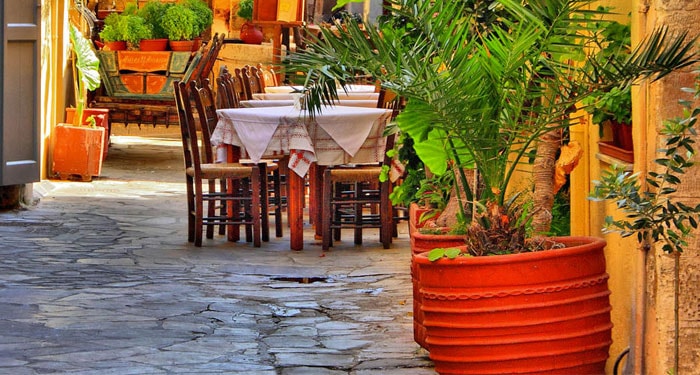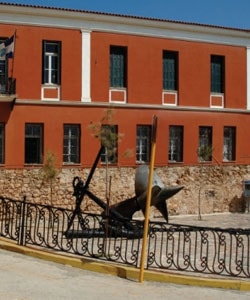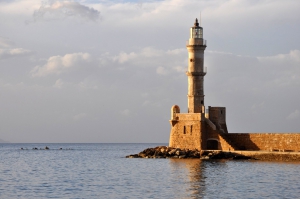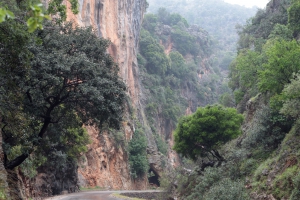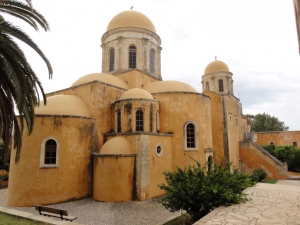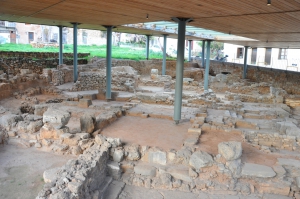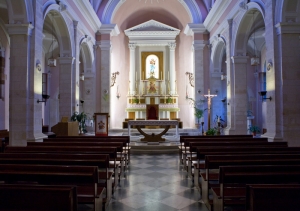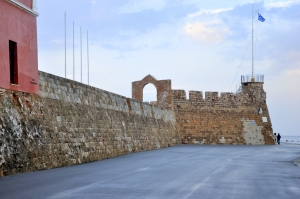The lighthouse at the old harbor of Chania is the most recognizable part of the city, posing at all travel books of Crete. The story of the lighthouse starts a long ago, although its present form dates back since the Egyptian Occupation of Crete (in the early 19th century).
The monastery of Agia Triada of Tzagarolon is one of the richest and most beautiful monasteries in Crete. It is built near the airport of Chania, in the position Tzobomylos of the Cape Melecha and at the foothills of Stavros Mount. The distance from Chania is only 15km.
The Gorge of Therisso (named also Eleftherios Venizelos) is located near the city of Chania. You can go there by car. The main gorge is six kilometers long. The vertical cliffs are impressive and the lush vegetation has nothing to envy of the other Chania Gorges. The place deserves a visit, even with a vehicle, cobined with a visit in the historical beautiful village of Therisso.
Souda is the name of the small island that stands like a guard in the entrance of the gulf of Souda., a natural harbor protected by the high mountains the east of Chania, on the northeast side of the port of Chania.
Gouverneto or Gderneto Monastery is located 19km east of Chania, on the north side of the Cape Akrotiri of Chania, near the monastery of Agia Triada Tzagarolon. It can be accessed through the Agia Triada, where there is a sign leading to the Gouverneto.
The Minoan Kydonia was built at the current location of the old town of Chania. Kydonia was the third largest town of Minoan Crete. Here developed a thriving craft industry and the town became rich through sea trade, which was favored by its position. Indeed, the ancient writers mention Kydonia as the mother of the Cretan towns.
The Roman Catholic Church in Chania (1842) meets in the town centre at Halidon 46, the road that leads from 1866 Square down to the harbour front, in a beautiful building just set back from the main frontage.
On the west side of Chania harbor, the traveler can still visit Firkas fortress, still dominating a low hill and housing the modern Naval Museum of Crete. Firkas is a Turkish name and means division, as the fort housed the headquarters of the Turkish Division.






